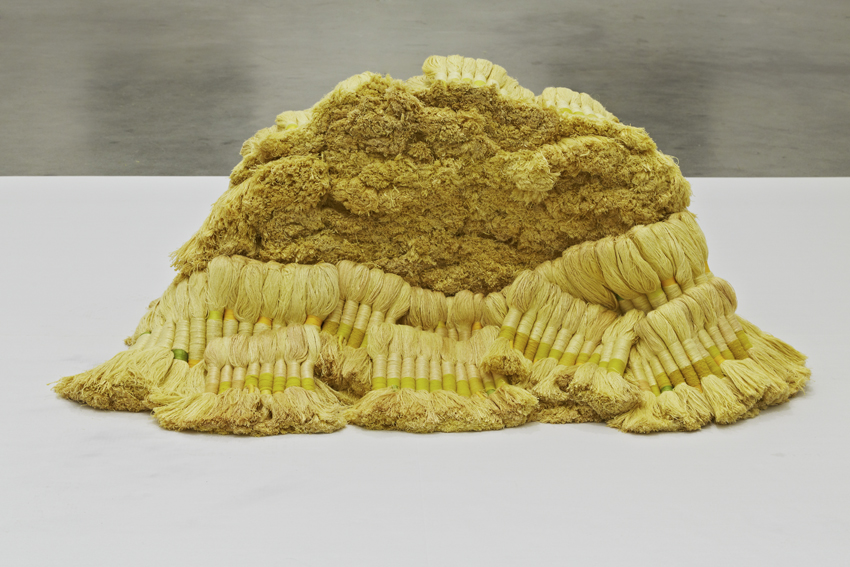
Sheila Hicks, Banisteriopsis II, 1965–66/2010. Linen and wool, 25 x 53 1/2 x 19 inches (63.5 x 135.9 x 48.3 cm) (variable). Gift of the artist in honor of Jenelle Porter. Photo by Charles Mayer Photography. © Sheila Hicks
For the last fifty years, Sheila Hicks has been one of the foremost artists working in the medium of fiber. Alongside notable contemporaries such as Magdalena Abakanowicz, Lenore Tawney, and Claire Zeisler, Hicks moved fiber from the loom into the realms of sculpture and architecture. The 1960s and ’70s—when much of this groundbreaking work gained notice—saw the divisions between art and craft eroded by experimentation with nontraditional sculptural materials. Parallel developments occurred in the contemporary art world as artists such as Eva Hesse and Robert Morris began to use fiber in their process-based work. Hicks, now in her eighties, continues to be a renegade sculptor devoted to fiber, or as she often calls her medium, “the linear pliable element.”
Banisteriopsis II is a freestanding sculpture made of compacted linen, gathered and wrapped (most closely resembling a leek or ponytail) to generate endlessly repeatable elements. It was created in 2010 and combined with an earlier work from the Banisteriopsis series (in the collection of the Montreal Museum of Fine Arts) for Hicks’s fifty-year-career survey. The re-creation and expansion of this work is in-line with Hicks’s working process. Hicks’s work in fiber was pioneering in its reliance on serial forms and the specificity of site. She often changed her sculpture according to the exhibition context, and even destroyed older artworks by reusing elements for entirely new sculptures. The deployment of serial forms was unprecedented in fiber work, but entirely in keeping with sculptural movements of the 1960s, minimalism in particular. The Banisteriopsis series is among the most important in Hicks’s oeuvre, not only for its form but its use of vivid yellow. Hicks was attempting to make a new kind of sculpture in fiber, and her groundbreaking move to pile fiber is recognized by art historians as one of the most important transformations of the new movement in fiber art.
Banisteriopsis II is an exceptional addition of fiber art to the museum’s collection and was featured in the ICA/Boston’s 2014–15 exhibition Fiber: Sculpture 1960–Present. It is a major work by this critically important, yet under-recognized artist. The relation to works by Mona Hatoum, Tara Donovan, and Faith Wilding illustrates a way of making sculpture far outside the conventional trajectories of sculpture’s histories.
2012.26